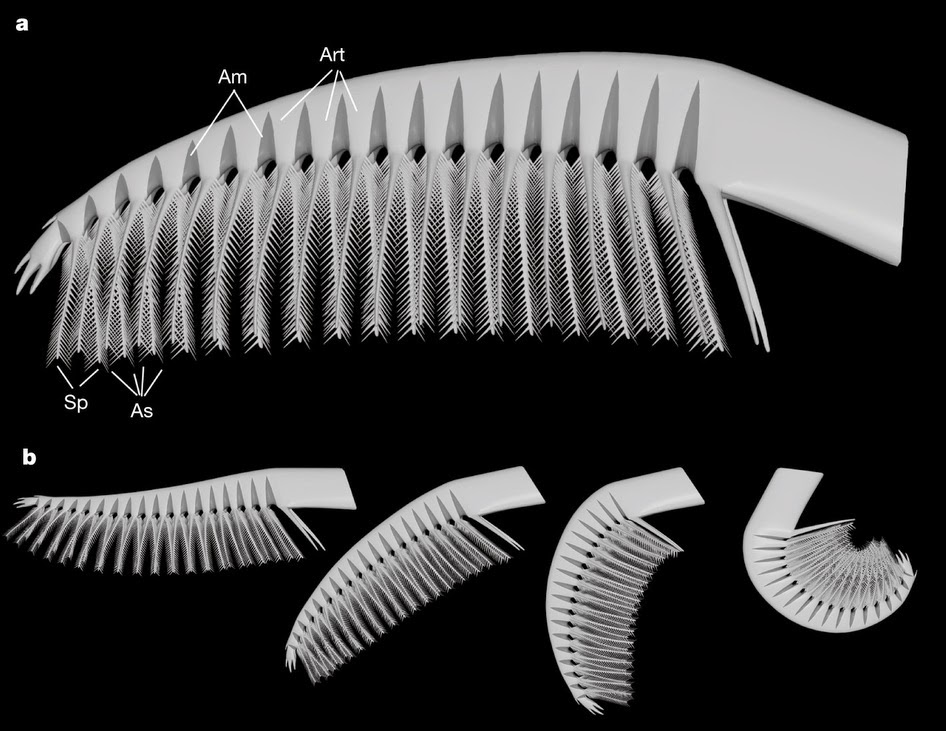To me, the most important lesson to draw from life of the
past is that no era is particularly more advanced than another. Sure, the
animals of one era may have features which were absent in the previous (i.e.
bones, eyes, etc.), but in general the most advanced periods of each era were
stocked with a diverse and unique array of life. What I’m trying to get at is
that, to me, it seems that the Cretaceous had just as many dinosaurs as the
Miocene had mammals. Different times, different environments, different groups
of animals, but neither one was better or more adapted to its surroundings than
the other.
 |
| Gould's Wonderful Life focuses on the complexity of life in the Burgess Shale, pictured here. Painting by Carel Brest van Kempen. |
How can we make such an assumption? Surely their lack of
bones and complex eyes and lungs make them inferior to mammals, or reptiles, or
even fish. But success and diversity aren’t measures of body parts. They’re
measures of niches. The Cambrian was a hotbed of awesome creatures which filled
every niche available at the time. There were sponges, worms that preyed on
sponges, trilobites, arthropods that looked like trilobites, jellies, scaly
urchin-y things, “riddle teeth,” and giant predators measuring a whopping 1m in
length. Every niche, from benthic scavengers to macropredators was filled by
invertebrates of various phyla, some of which are now completely extinct.
If that wasn’t enough to convince you that the Cambrian
wasn’t an age of failed creatures, one recent discovery will. Tamisiocaris borealis is a newly-found
anomalocarid, a relative of the famous Cambrian critter Anomalocaris, one of the world’s first large predators. The
anomalocarids all feature “great appendages”* with adaptations which hint at a
predator lifestyle, with small spikes and barbs perfect for grasping prey and
articulating it into the ventrally-located mouth. What makes Tamisiocaris so special is that, instead
of having great appendages for grasping prey, it evolved long, feather-like
branches: Tamisiocaris was a
filter-feeder.
*Yes, this is the actual technical term.
That’s not such a stunning fact now: in the hundreds of millions of years since the Cambrian,
filter-feeding has independently evolved across the animal kingdom, from whales
to pterosaurs. But in the Cambrian, there was nothing that lived even a
remotely close lifestyle. Tamisiocaris
was the first creature we know of that evolved from its carnivorous, predatory
ancestors to a lifestyle of peaceful planktivory. Instead of noshing on crunchy
trilobites near the sea floor, it could glide along in the open ocean, using
its huge brush-like great appendages to trap primitive plankton and other tasty
vittles.
To me, this is the most exciting fossil found in recent
years. Sure, reptiles will always have a special place in my heart, but when we
find fossils from the Cambrian, especially ones which totally shake our idea of
what it means to be ancient, and not primitive, we view our earth in a much
more realistic, and much less mammalian-biased, light.
 |
| Reconstruction of Tamisiocaris and other Cambrian critters by Rob Nicholls. |

No comments:
Post a Comment